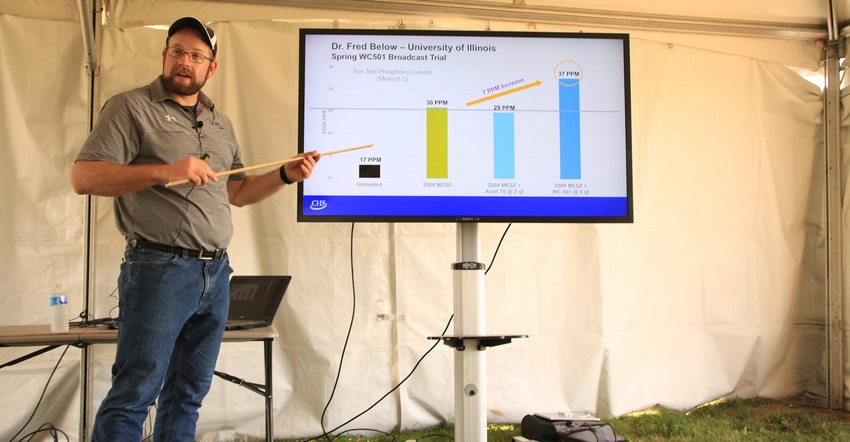
When farmers are asked how much phosphorus actually gets to their crops from a fertilizer application, a common response is 60%.
“That’s not even close,” says Steve Carlsen, crop enhancement portfolio manager with West Central. “When we take some of the best soil conditions in the U.S. — optimal pH, organic matter, good weather — under those best conditions possible, you still only get about 20% of that phosphate utilized in the crop.”
He says across the U.S., 7.5 billion pounds of what farmers apply in phosphorus is left unavailable to crops, as most stays tied up in the soil. Phosphorus that is kept active by optimal conditions isn’t capable of outsizing what’s fixed to soil, but Carlsen says “chelation” technology like West Central’s Levesol overcomes ionic bonds to free micronutrients from phosphorus.
While a chelate like citric acid can help free up micronutrients, Levesol’s 17-year-old base chelate, known as ortho-ortho EDDHA, is more powerful and frees up phosphorus by chelating the micronutrients it binds to, whether they be applied or occurring naturally in the soil. The company announced its first Levesol-based broadcast additive in June, a three-component mix called Trivar.
“Now that we have Levesol in broadcast, it’s efficiency at its best,” Carlsen says. “I’m doing broadcast fertility applications already. Trivar helps me get the most out of my fertility application.”
Trivar has a standard use rate of 3 quarts per ton of phosphate fertilizer and can be applied in either the fall or the spring.
“We’ve had several years of developing these products for the in-furrow market,” Carlsen says. “There’s probably 18 million acres in the U.S. where in-furrow applications are utilized today, so we worked for a few years to make Levesol available to broadcast acres — the most common fertility application in the U.S.”
To increase the efficiency of the fertilizer, he says West Central concentrated the Levesol chelate to its highest level ever and added phosphatase enzymes that convert phosphorus to the available form. They also added the micronutrients of zinc (5%) and boron (0.5%).
Independent research has shown Trivar’s effectiveness. Following a broadcast trial held at the University of Illinois this spring, researchers determined available phosphorus levels increased 7 parts per million with Trivar compared to trials that didn’t include the additive in the fertilizer mix. Carlsen says land that received no P fertilizer came in 20 ppm fewer than the Trivar plot, though it was still helped along by the ideal conditions present in Champaign County, Ill.
“Seventeen parts per million, from where I come from, is phenomenal,” adds Carlsen, a Minnesota native.
Trials from Illinois to Minnesota show corn that has not received dry fertilizer treated with Trivar had shorter and thinner root growth by early June. Carlsen says the boron went a long way toward helping the stand get established in less-than-ideal weather in May, boosting yield potential. In early June at the Champaign County site, there was a 3% increase in canopy coverage compared to the strip that didn’t have Trivar applied.
As the season continues, he says the phosphatase enzymes in Trivar will continue to make phosphorus available to the plant.
“When we talk about enzymes, the nice thing is that when it hits that receptor, it’s not done. It can be recycled thousands of times in that soil and drive thousands of reactions,” Carlsen says, concluding enzymes push phosphorus availability throughout the season.
About the Author(s)
You May Also Like




